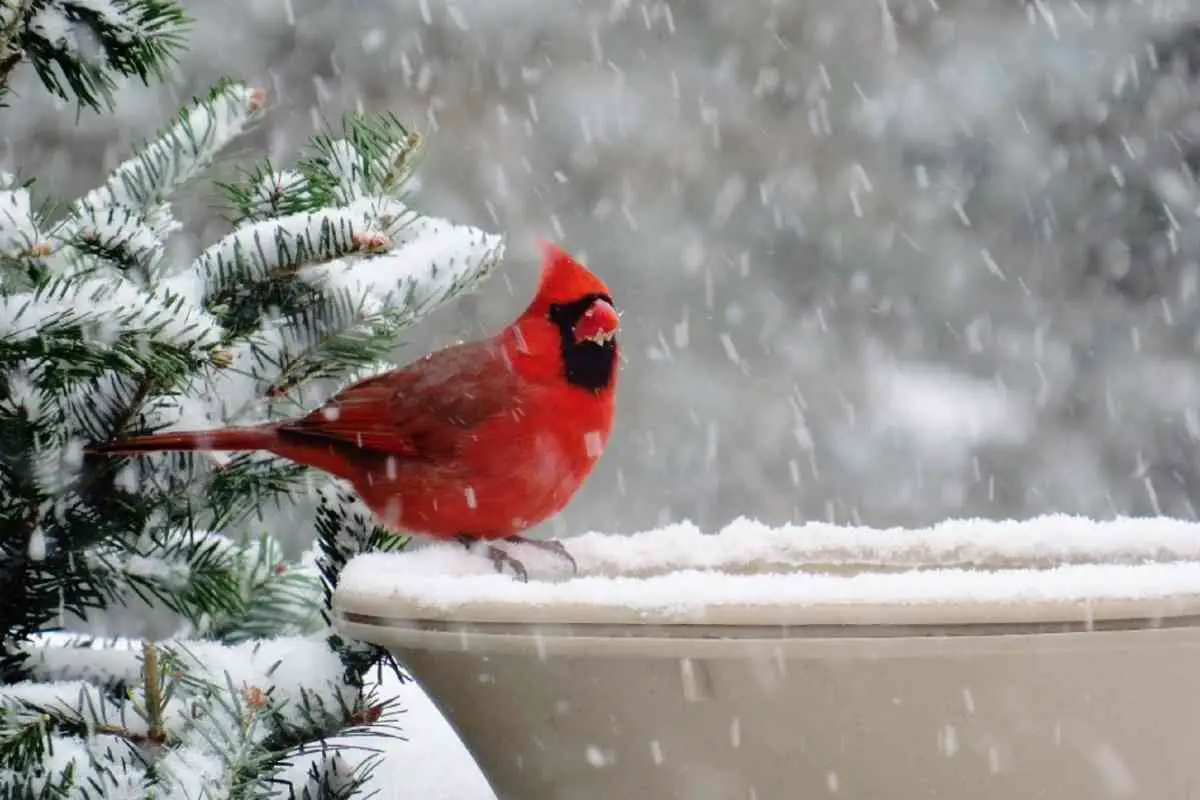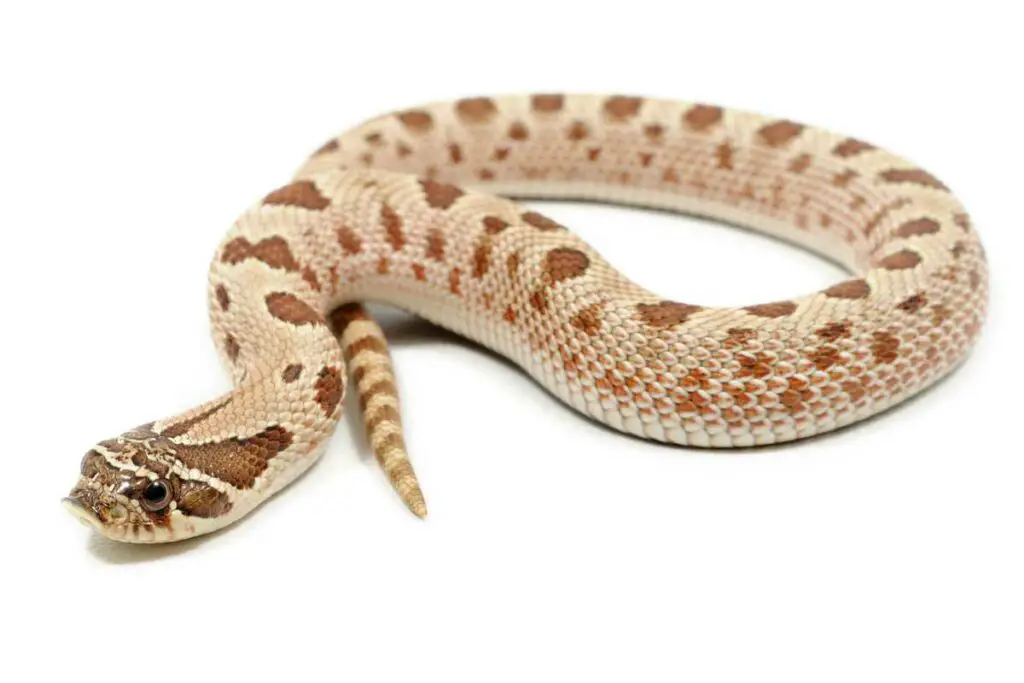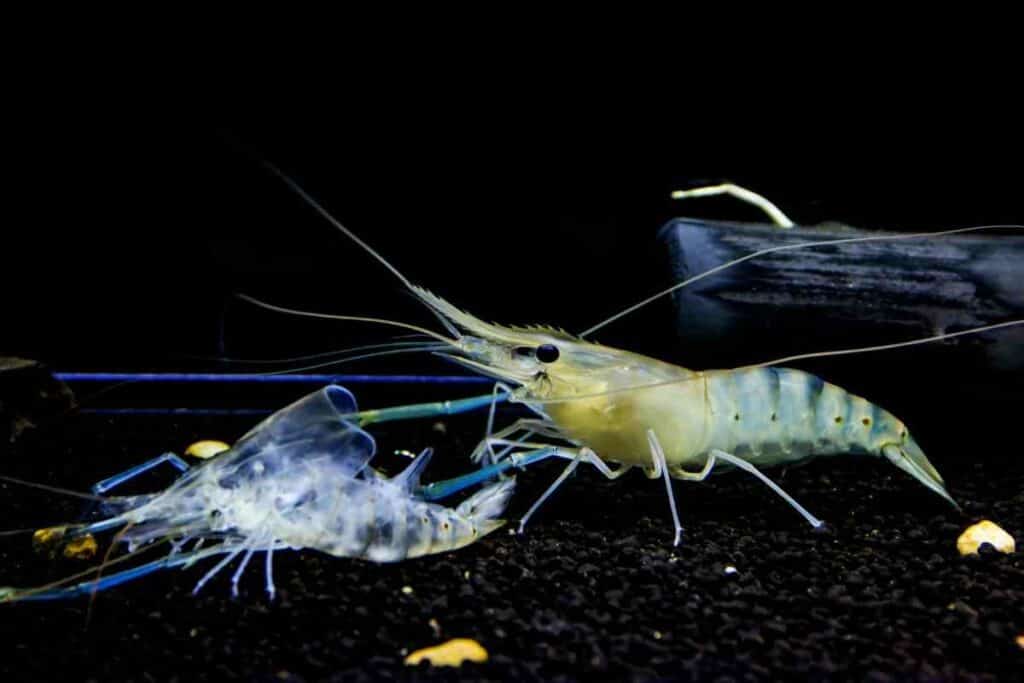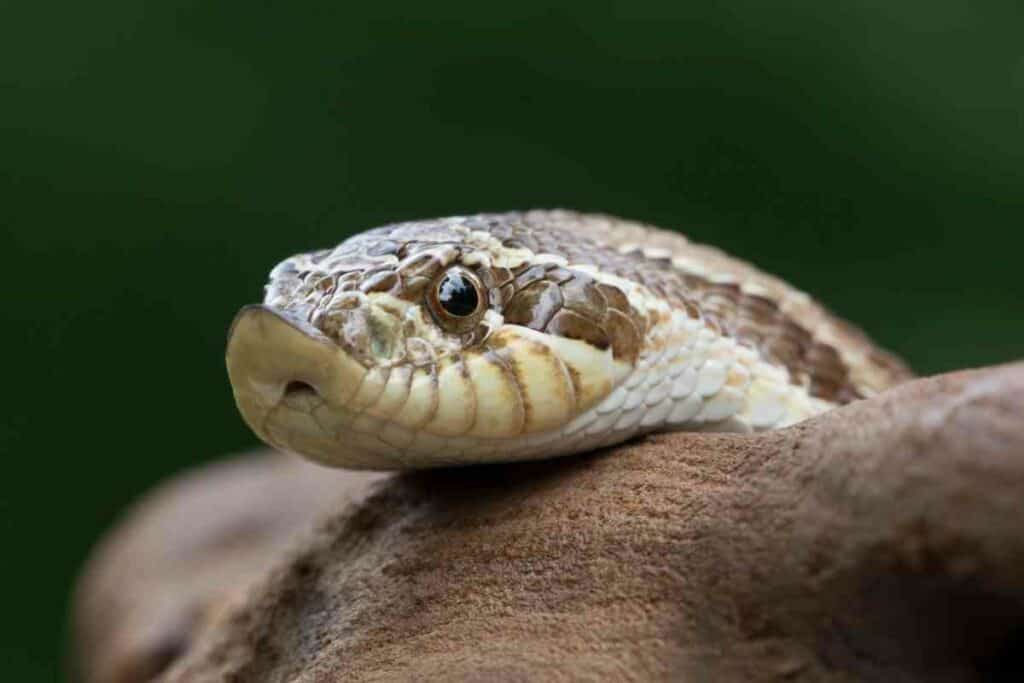Cardinals are hard to miss with their bright red coats and melodious chirpy sound.
While you may think winter migration is a given for the magnificent cardinals, but, unlike other songbirds, they are all-year rounders that do not migrate before or during winter. Cardinals like to live where they are born, with the male species getting extremely territorial. However, these birds only move away when food is scarce, and they are forced to find a new food source.
Since cardinals do not migrate in winter, they were usually found in the traditionally warmer southeast US.
However, due to the cardinal’s adaptability and increased bird feeders in colder weather, these redbirds (although females sport a tan coat) have expanded their range all the way to the northern US, even Canada.
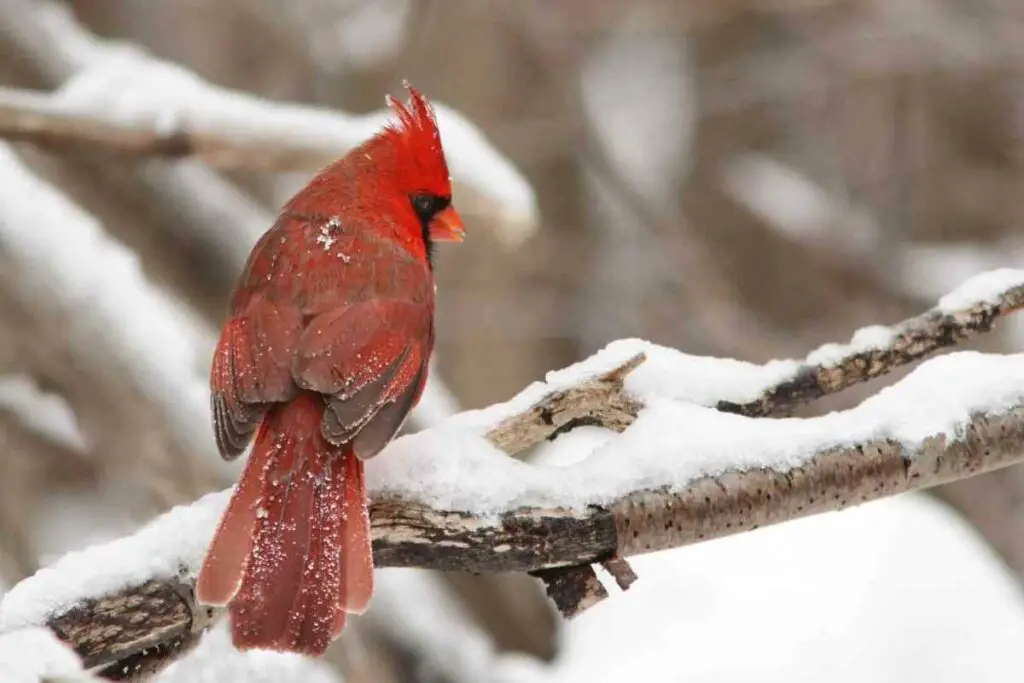
We know cardinals do not migrate in winter; thus, let’s discuss how they survive during cold temperatures and how we can help these non-migrating birds in winter.
Table of Contents
How Do Cardinals Survive Harsh Winters?
Due to their non-migratory nature, it is no surprise to find cardinals flocking in a tree or visiting backyards for bird feeders in winter.
The biggest reason cardinals can survive through the cold is their ability to adapt to readily available food sources.
However, for the bright-colored cardinal, food availability is not the only worry in winter – they also need to stay safe from predators – who can easily spot them from afar.
With feeding and safety even more essential in winter, let us see how this small bird makes it through winter.
1. Excellent Bodily Insulation
On an especially chilly day, a cardinal’s feathers provide excellent insulation to fight off cold.
Apart from that, this bird has blood arteries running through places with no feathers, like its feet, which aids in keeping the body warm.
During Late Summer: Cardinals go through the process of molting, where they replace old fathers with new ones just in time for winter so that they have the needed insulation for the harsh weather to come.
2. Adapting to Varying Food Sources
The reason so many birds migrate during winter is their inability to find food they can eat.

Therefore, they make the trip to warmer places where common bird foods like insects and nectars will be readily available – for a cardinal, such concerns pale in comparison.
Easily satiated by insects under the tree bark, sap, and birdseed, the cardinal is well-suited to spend time in colder regions, where most of such feed is available in enough quantity to survive the colder months.
3. Burning Fat Reserves
Since the cardinal diet consists of energy-rich seeds, they can survive chilly nights by burning through their fat reserves.
The protein-rich diet helps them develop fat which the cardinals can later burn to maintain their body temperature in colder months.
4. Safety In Numbers: Cardinals Flock Together
Apart from feeding and keeping warm, the cardinals’ striking beauty can be a nuisance in winter, when they are easily spottable for predators against stark backgrounds.
Therefore, the cardinals choose to flock together in winter to protect themselves through numbers despite their territorial reputation.
5. Reside In Safer Human Structures
Instinctively cardinals choose to stay in tall trees with dense foliage, providing them protection from predators.
However, the alternative preferred choice of residence, especially in winters, is manufactured structures like barns and garages.
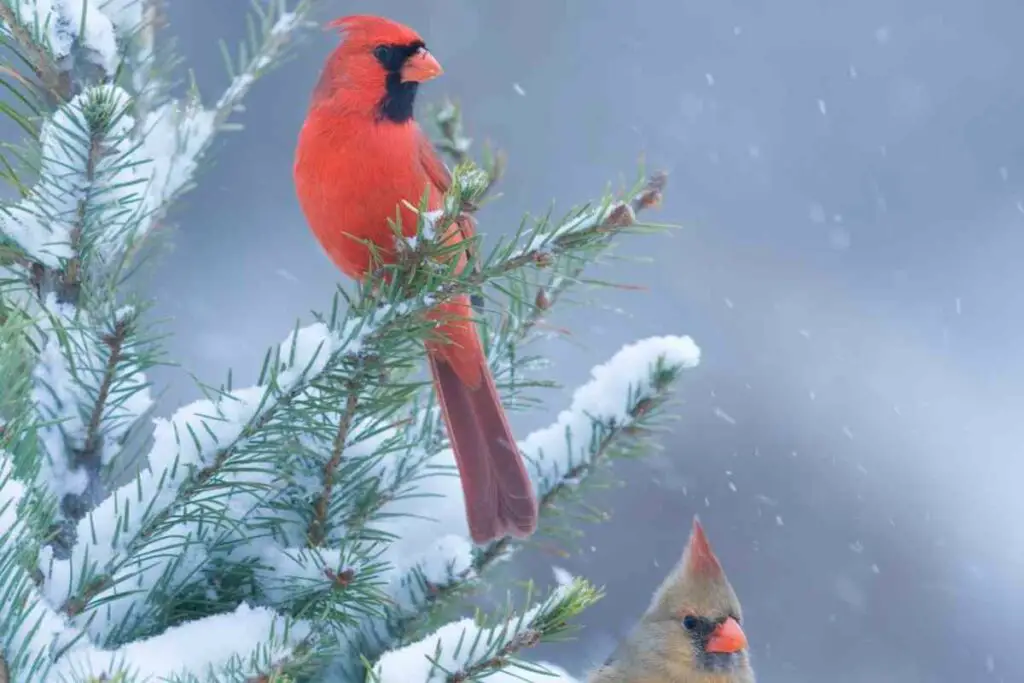
Well-built structures not only allow cardinals safety from predators and climate, but they also often price an excellent food source courtesy of bird-lovers.
6. Increasing Winter Bird Feeders
The cardinal’s ability to adapt to suburban infrastructure makes it easier to survive winter with ample feed.
In recent decades, more and more places have become bird-friendly, and people have more awareness about animal needs.
This increase in knowledge is accompanied by a welcome increase in the number of bird feeders. With its striking beauty, it is no wonder that the cardinal is a fascinating bird to watch and feed.
Cardinals become a bird of habit in winter.
As a Result: Once they locate regular feed in a park or a backyard, they will frequently visit to satiate themselves for the months ahead, making their winter scavenger hunt a lot simpler than it would be otherwise.
What Can You Do Help Winter Survival Easier For Cardinals?
According to a study in the UK, increasing bird feeders in the backyard have helped maintain varying bird species.
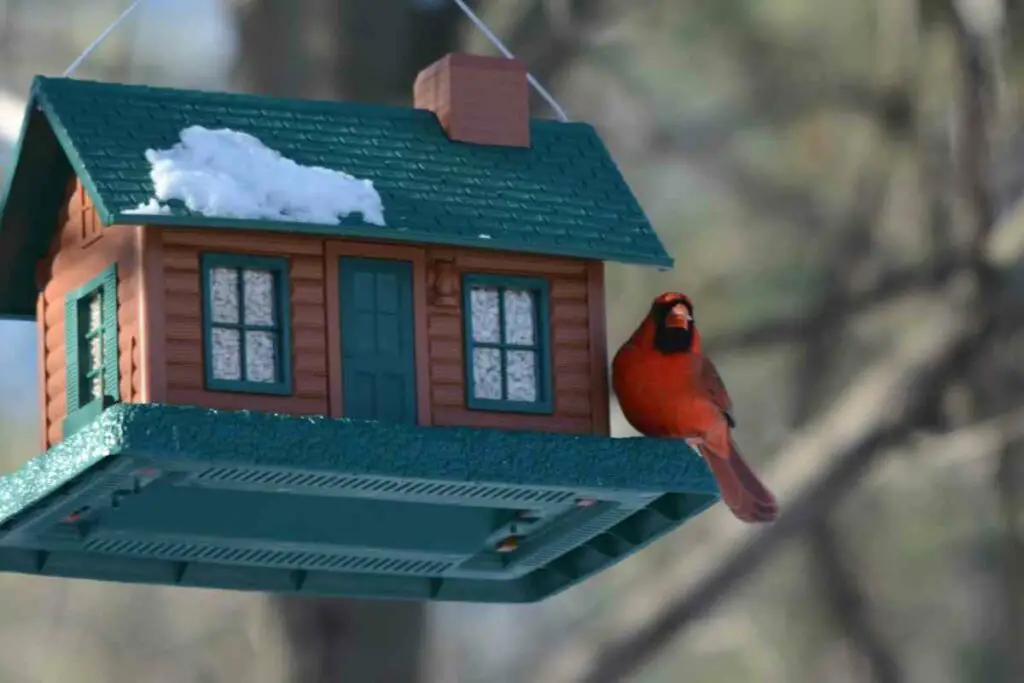
Thus it is essential not to undermine your role in making winters easy for cardinals.
Provide Shelter: Natural and Man-Made
One of the most beneficial things you could do to a bird in winter is to provide them with safe shelter, especially a bright-colored bird like a cardinal.
Since cardinals like to perch on high dense trees, you can give them a place to rest by planting trees. Even bushes work well as a roosting place.
Moreover, apart from garages and barns, you can build a birdhouse for cardinals to rest when they like.
Although it may not be the shelter of choice, in harsh winters, along with the threat of predators, enclosed space like a birdhouse can provide the comfort and safety required by cardinals.
Even Better: Adding protective coatings like wood chips for improved insulation can make your birdhouse winter-ready and more attractive for a cardinal.
Know The Importance of Correct Feed and Feeders
Safflower and sunflower seeds remain the best energy sources for cardinals that require it even more so to keep themselves warm.
Keep in mind to add the right kind of food to the feeders to help these songbirds that largely rely on bird feeders for a consistent food supply.
Nyjer seeds and suet cakes also prove to be nutritious.
An approximately 8-feet high fixed feeder is a good choice.
Go for an easy-to-remove feeder with a wide lid, where you can quickly replace the feed and allow the birds to use it as a shelter as well.

Placing a tray below the feeder will help cardinals feed and reduce any seeds’ mess on the ground.
Install Heated Bird Baths
Installing heated bird baths can help cardinals since they have water to drink when other water sources may be frozen.
Despite the cold weather, birds need water in winter.
Do It If You Can: A heated birdbath can provide ready-to-drink water without cardinals using precious energy to get it from a frozen source.
Final Thoughts
Cardinals do not migrate in winter and like to stay near places where they were born.
Thus, providing them with food like seeds and shelter can help make these cold months a little easier to survive.
The redbirds like high dense branches to stay safe from predators, but if natural vegetation and food are scarce, urban bird feeders can play a vital role in keeping the striking bird flying through your snowy backyard for numerous years to come.

